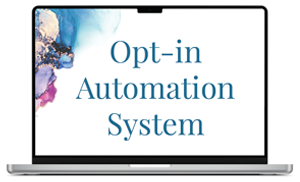Not long ago, I found myself chatting with a well-respected marketer about membership website models. During our discussion, it became clear to me that we had very different definitions on what a membership site is.
From his perspective, membership sites are ones that you pay ongoing fees for and new how-to content is being added all the time. Other sites are courses, not true member sites.
From my web designer perspective, any time you put content behind a paywall and/or gate access and someone has to log into see the content, it's a member site or membership site. It doesn't matter if content is fresh or stays the same. There can even be free levels for limited access.
To-may-to, to-mah-to, it's all in the perspective.
We're both right, in my opinion, but it did get me thinking on how this could be confusing for someone wanting to create a membership site.
One way to make a distinction is how the money is flowing into your pocket. Let's first consider what model of membership course site you're building from a revenue perspective. Making this decision first will help you choose the way you build your site and deliver content, what platform to suits you best, and how you're going to take in sales.
There can be a few variations, but typically these fall into 3 categories:
- Monthly (or ongoing) recurring fees (typically lower end price point)
- Open/closed enrollments, where sales are limited by a calendar date (typically mid to high-end price point)
- Evergreen, where sales can be at any time and are ongoing (can range from low to mid price points)
Monthly Recurring Membership Model
These types of sites rely heavily on content generation, where new content is released on a monthly basis to members. This model works well to build a strong sense of community among its exclusive members. Some examples might be the Female Entrepreneur Association, The Beautiful Writers Group, or Digital Marketer's The Lab.
Considerations
The audience is fairly narrow, and you're relying on your ability to keep generating new content and value to your members. Typically the cost is a lower monthly fee, and new members have access to the previously released content archive.
Membership growth takes time, and you'll need to have some great start up content (plus reserves) and a tight production plan for releasing content. You'll probably find that you have a “lifespan” for most members, and your sales will be dependent upon extending that lifespan. Your core marketing focus is getting new members into the site and retaining the current members by reducing churn. Another focus will be to develop a win-back strategy for those who've been members and cancelled.
You'll also need an easy way for members to cancel themselves, and have their access turned off upon cancellation.
Open/Closed Enrollment Model
These member sites are course content driven, and focus on a select pre-launch (to grow interest), launch and sales methodology. Some examples are Marie Forleo's Bschool or Tara Gentile's Quiet Power Strategy. This is a very popular model which can generate a lot of sales in a short period of time.
Considerations
Some things to think about for this model include creating landing pages and content to get people excited for the launch “event” and lots of email marketing content around the pre-launch, launch, and sales stages. When the selling stage has closed, there's an opt-in box on the sales page to be put on a wait-list for the next time the course opens.
Content for this model may be dripped over a period of time to members or given full access. Dripped content keeps members focused on one section of a course at a time, and everyone's on the same page, so to speak. Typically there's an “end” date to either group coaching or other guided help. Members may have lifetime access to the material and access it at any time.
The beauty of this model is after the course has been completed by the latest round of buyers, you have time for gathering feedback, assessing, and making improvements for the next round. From a marketing perspective, you have more time to create more of what worked during your last launch, and toss out anything that didn't.
Because of the timed launch schedule, this model also makes it easy leverage joint partnerships during the pre-launch and launch stages.
Evergreen Model
These courses are for sale all the time and generally give full access to the material after purchase. They maybe set for a one-time price or payment plan. Sometimes the content is dripped. There may be some group or one-time coaching on a limited basis. Typically members have lifetime access.
Some examples of the evergreen model are Leah Kalamakis' Stress Less & Impress, and She Podcast's Podcasting School for Women.
Considerations
The evergreen model will rely heavily on advertising and traffic to generate sales. This model can be a reliable income stream and works best when you have completed a few beta runs with the open/closed cart methods and made improvements for a solid course. Testimonials and social proof will play a strong role.
Site Access
No matter which model you choose for your membership website, you'll need some sort of online site to place the content on. There's a wide variety of platforms to build your course on, which we'll dive deep into in the next article.

Amplify Your Opt-in Funnel
This FREE ebook will help you map out your opt-in funnel to turn your prospects into delighted customers. You'll also get marketing tips in your inbox.




